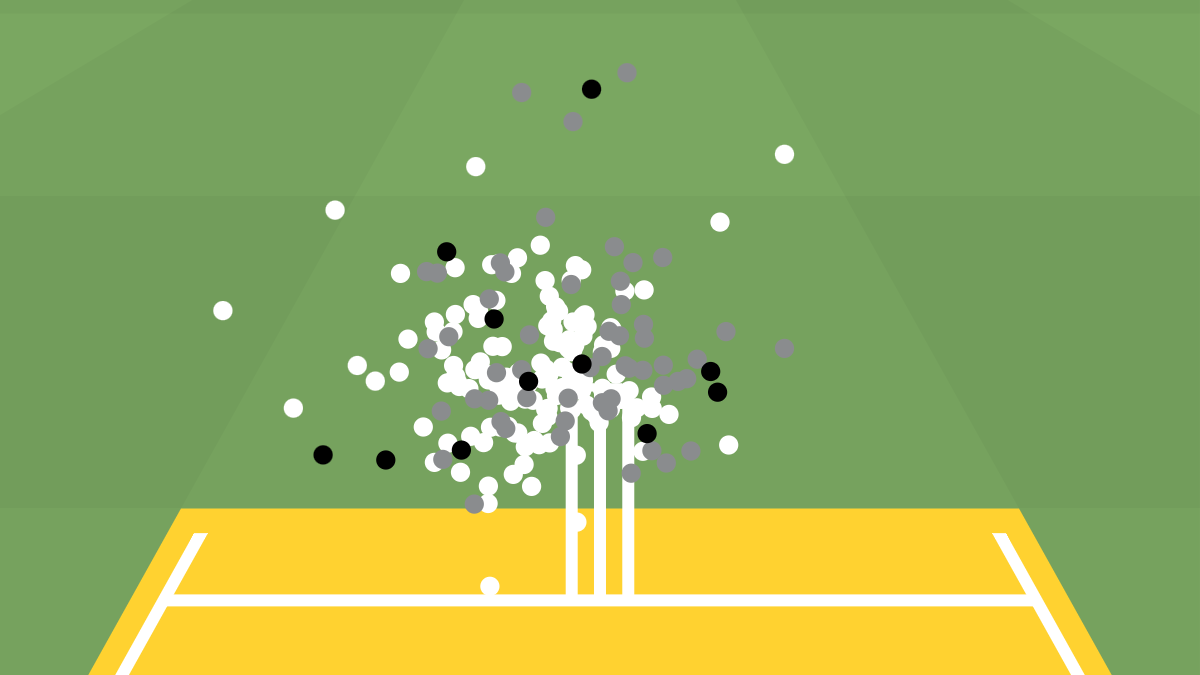To play this video you need to enable JavaScript in your browser.
- 2 Comments
It was, statistically at least, the most secure Test century on record in England.
Rookie India captain Shubman Gill, with all of the noise in the background and on the back of a punch-to-the-stomach defeat last week in Leeds, defied England on day one of the second Test at Edgbaston.
The hosts will have sensed their moment to push further into the ascendency in this series when winning the toss and choosing to ‘have a chase’.
But Gill responded with a controlled 114 not out to better some modern-day greats and help his side close on a respectable 310-5 in Birmingham.
“The way he is batting has been incredible to see,” said team-mate Yashasvi Jaiswal, who shared a stand of 66 with his captain.
So, what exactly did Gill do?
Gill would have been forgiven for leaving Edgbaston on Tuesday with his head in a spin.
In his pre-match news conference he fended question after question about his team selection this week – mostly about whether his star bowler Jasprit Bumrah would play.
The travelling India press pack is large and unrelenting and Gill struggled to sate them. The message was muddled. His batting in Birmingham 24 hours later was not.
Having spoken about wanting to compartmentalise batting and captaincy before the series, Gill strolled to the middle and played an innings with a false shot percentage of just 3. 5%. The average in England is 12%.
It makes it the most controlled ton on these shores since analysts CricViz began recording such statistics in 2006.
England run-getting legends like Sir Alastair Cook, Joe Root and Kevin Pietersen were never this controlled using the same metric. Nor were modern-day greats Rahul Dravid, Ricky Ponting and Kumar Sangakkara, who have all peeled off glorious hundreds on these shores in the last 20 years.
Gill’s innings contained just two outside edges off Chris Woakes – both before he had reached 20 – and an inside edge to Brydon Carse that thwarted an England lbw review.
There were three more false shots – any edge, play and miss or stroke mishit – to Woakes and two to Ben Stokes. Otherwise that was it – as close to perfection as anyone has been in recent years in England.
The pitch was the second easiest on record on a first day at Edgbaston – number one was in 2017 against West Indies in case you wondered – but Gill responded with the most controlled of knocks.
How Gill has conquered English conditions
Gill was named Test captain in May despite doubts around the 25-year-old’s record overseas.
In six innings in England he averaged 14. 66 but, batting at number four further from the new-ball movement, he made 147 in his first innings as skipper in the Headingley first Test.
“He has worked on his defence,” Ravi Shastri, India’s coach when Gill made his Test debut, told Sky Sports.
“When he last came to England he played with hard hands and pushed at the ball. Now he allows the ball to come and hit the bat. He is trusting his defence. “
That trust was shown in the middle. He took 125 balls to reach 50 and 199 to reach 100 – both his slowest efforts.
England’s plan to Gill was clear after his success at Headingley: their lines were the straightest they have bowled at a batter in 16 years as the pace bowlers targeted the pads.
“It felt like we were close to getting him lbw where he got a little inside edge,” said Woakes.
“Other than those it felt like he was in control of pretty much everything. Credit to him.
Whose record did Gill beat?
England’s greatest tormentor in the CricViz era has been Steve Smith but even the great Australia does not come close to a century as controlled as Gill’s here.
His lowest false shot percentage in any of his eight Test centuries in England was 9% – a difference of far more than a strip of sandpaper or two.
The previous best came from an unlikely name – former England opener Sam Robson who hit 127 in his second Test against Sri Lanka at Headingley in 2014.
Related topics
- India
- Cricket
Source: BBC

Leave a Reply